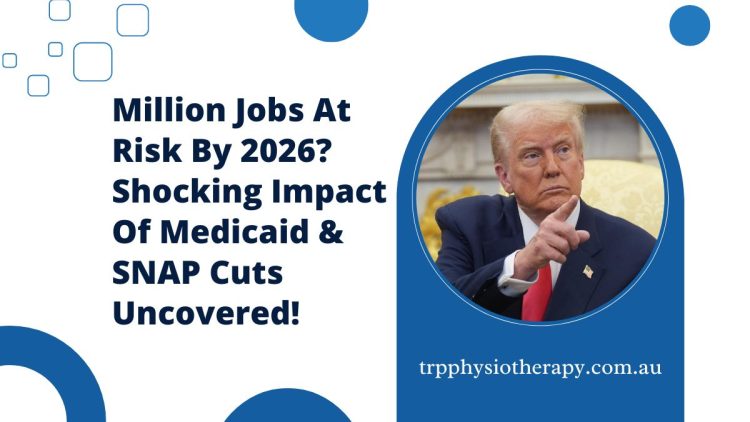As federal budget debates continue, proposed cuts to Medicaid and SNAP could trigger a massive economic ripple effect. An alarming forecast warns that over 1 million jobs could be lost by 2026 if these essential programs face severe reductions.
With wide-reaching implications for healthcare, food security, and employment, the proposed changes could reshape the landscape for millions of Americans—especially the most vulnerable.
What’s Happening?
The current federal budget proposals include significant funding cuts to Medicaid (the nation’s primary health insurance program for low-income individuals) and SNAP (the Supplemental Nutrition Assistance Program, formerly known as food stamps).
If implemented, these reductions could result in:
- Over 1 million jobs lost across the U.S.
- GDP losses exceeding $100 billion
- Billions in state and local tax revenue shortfalls
Where Will the Impact Be Felt?
The job losses are expected to hit multiple sectors, especially healthcare, food service, and public sector services. Here’s how it breaks down:
| Sector Affected | Estimated Jobs Lost |
|---|---|
| Healthcare & Hospitals | 477,000 |
| Food Industry & Retail | 78,000 |
| Public Service & Others | 476,000 |
| Total Estimated Jobs | 1,031,000 |
State-by-State Impact of Medicaid & SNAP
While the effects will be nationwide, some states will be hit harder due to higher enrollment in Medicaid and SNAP. States with large low-income populations or economies dependent on healthcare and food retail may see the most severe local job losses and revenue declines.
Expected high-impact states include:
- Texas: Estimated job loss – 67,500
- Pennsylvania: Estimated job loss – 49,000
- Missouri: Estimated job loss – 24,000
- Colorado: Estimated job loss – 14,000
- New Mexico, Kentucky, D.C.: Highest per capita impact
The Domino Effect: Economic Consequences
Reducing Medicaid and SNAP funding doesn’t just affect those receiving benefits—it sends shockwaves across local economies.
Healthcare Consequences
- Rural hospitals may close or scale back services due to decreased Medicaid reimbursements.
- Nursing homes and elder care facilities could face staff layoffs or reduced quality of care.
Food Industry Challenges
- Grocery retailers in low-income areas could see a drop in revenue due to lower SNAP usage.
- Agricultural suppliers may experience reduced demand and shrinking profits.
Public Services
- With declining state tax revenues, public education, transport, and infrastructure budgets could also be slashed.
Long-Term Effects
These cuts may also increase demand for unemployment benefits, emergency healthcare, and local aid programs, potentially offsetting any short-term budget savings at the federal level.
In communities where Medicaid and SNAP spending is a major source of economic activity, the ripple effect may last well beyond 2026.
What Should You Do?
If you’re a beneficiary, healthcare worker, or employed in food retail, stay informed on upcoming legislative decisions. Budget changes may influence:
- Job security
- Healthcare access
- Community support programs
Engaging with local representatives and reviewing state-level assistance options may help you prepare for any changes ahead.
The potential 1 million job losses by 2026 due to Medicaid and SNAP cuts reflect just how intertwined these social programs are with the broader economy.
Far from being isolated benefit reductions, these cuts could affect employment, public services, and economic stability across every state. As the debate continues, communities must be prepared for significant change—and possibly, a long road to recovery.
FAQs
Who will be most affected by the job losses tied to Medicaid and SNAP cuts?
Healthcare workers, grocery employees, and public service staff in low-income and rural areas are likely to be hit hardest.
Will these cuts affect only those on Medicaid or SNAP?
No. While direct recipients are impacted first, the broader economic effects could harm employers, service providers, and local economies.
Are all states equally affected?
No. States with high Medicaid/SNAP enrollment or weaker local economies may see greater per capita job loss and economic disruption.

